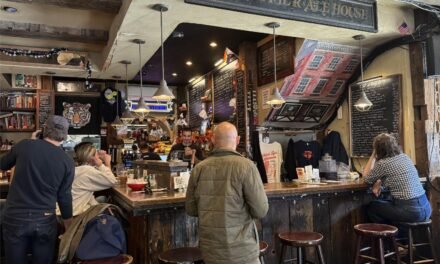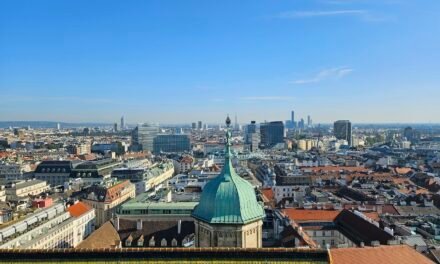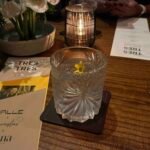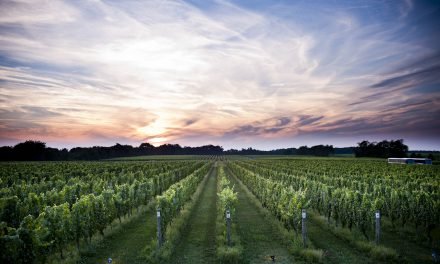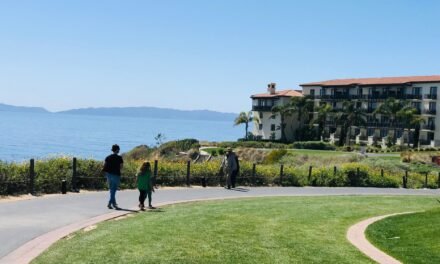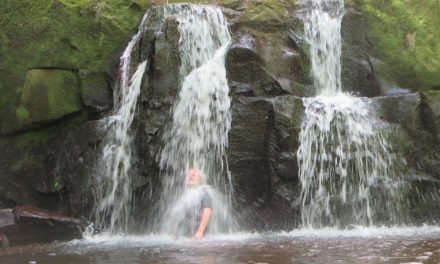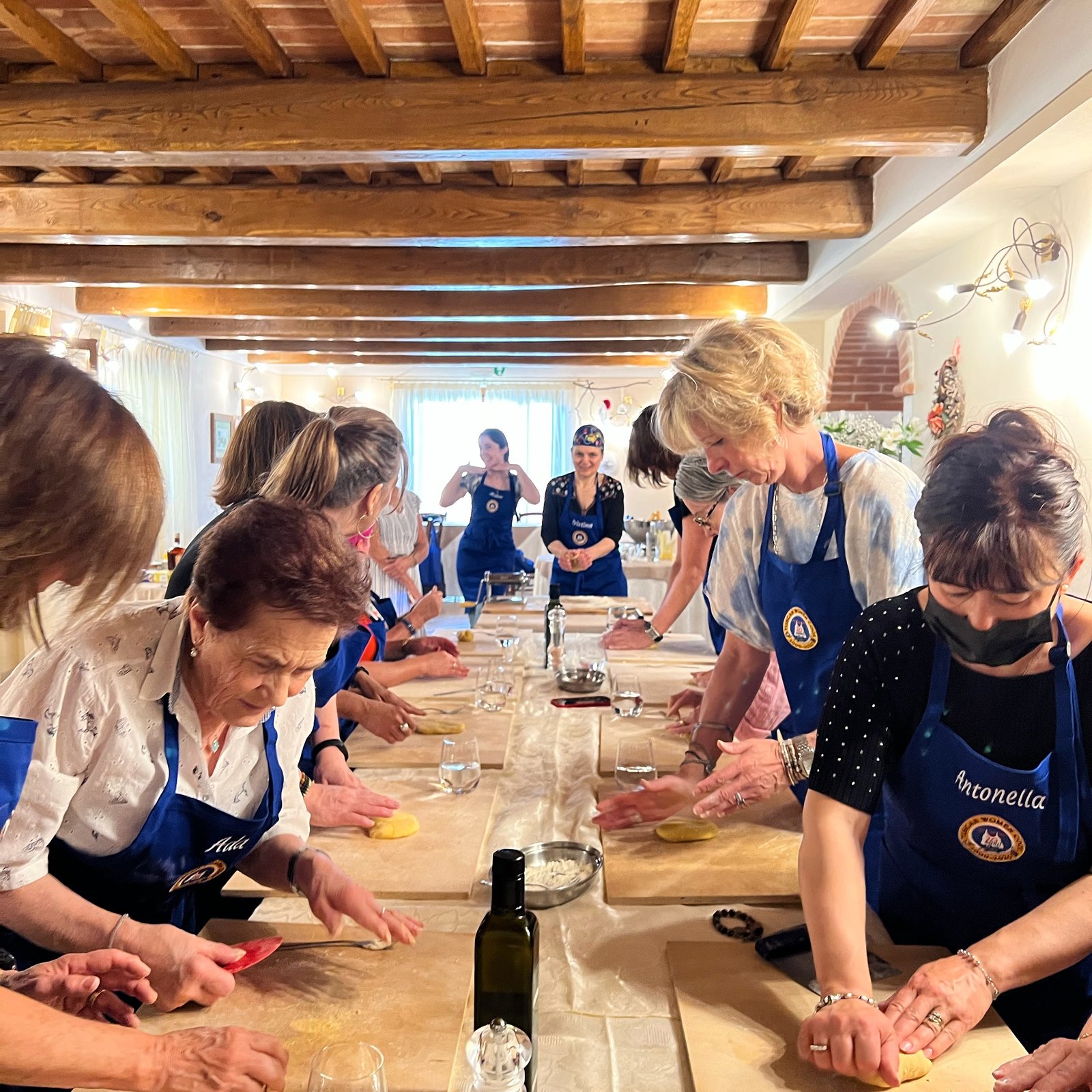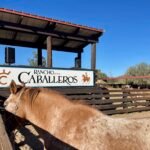
WALKING THE ALGARVE’S WILD WEST

It’s long been known that walking through a town, or through the countryside, is one of the best ways to discover a place. In his book A Philosophy of Walking, French philosopher Frédéric Gros suggested that walking is a route to entirely being ourselves and experiencing the sublime. Indeed, the inherent solitude one experiences while solo hiking has been known to open the flood gates to self-examination and reflection. Performing this activity while out in the wilderness via a network of hiking trails featuring iconic viewpoints and sweeping vistas has even been known to take one’s breath away.
BREATHTAKINGLY BEAUTIFUL
“Once a year, go somewhere you’ve never been before.” ― The Dalai Lama

Praia da Cordoama is one of several beaches that form a long sandy stretch along the coast just west of Vila do Bispo.
For outdoor enthusiasts and nature lovers, Portugal’s western Algarve is increasingly becoming known for being an ideal hiking destination to immerse oneself in an off the beaten path adventure. Renowned for its wave-swept sea cliff-backed beaches, golden sand dunes, deserted footpaths, and whitewashed fishing villages, the Algarve’s western coastline is breathtakingly beautiful. In the interior, the pastoral countryside is characterized by rolling hills and verdant valleys dotted with cork plantations and small rural villages where time has seemingly stood still. The lush forested green spaces are comprised of cork, eucalyptus, and pine trees interspersed with scenic gravel backroads and well-trodden footpaths. Barring any unforeseen heat waves, the climate here is relatively mild during the winter and warm in summer. Many of the natural sites are protected areas and have been designated UNESCO world heritage sites. It’s remarkable that so few people seem to know about the Algarve’s wild west?
FOOTSTEPS THROUGH TIME
“For walk where we will, we tread upon some story.” ― Marcus Tullius Cicero
Steeped in history, the Phoenicians established the first settlements in the Algarve region which the Romans later conquered. In the early 8th century, Muslims seized control. After nearly five centuries of Muslim rule, southern Portugal’s Algarve was taken into the Portuguese kingdom in 1189. To this day the Algarve (from the Arabic: Al-Gharb, meaning “the West”) still retains some of its Moorish characteristics. In 1419, Henry the Navigator founded a research centre that came to be called the School of Navigation in Sagres, a small town on the southwestern tip of the Algarve. The town was also my starting point for my self-guided, solo, week of walking the Algarve’s wild west.

A road less travelled in the Rota Vincentina.
SELF-GUIDED SOLO HIKING
“The world reveals itself to those who travel on foot.” ― Werner Herzog
Long a popular pastime in European countries, self-guided solo hiking vacations are a relatively new travel concept to North Americans. While day hiking does require some measure of physical fitness, this is a pursuit for people of any age so long as they take it at their own pace. The trails offer a mix of coastal paths, tracks of dirt or gravel roads, expansive fields, and woodland trails. Overall, the terrain is gently undulating with just a few steeper climbs and descents.

Hikers negotiating a coastal path near Praia da Cordoama beach.
The routes are all clearly waymarked and the daily itinerary is easy to follow. On average the hikes average five to eight hours per day over 12-18 kilometers. It’s important to note that you are under no obligation to hike the entire week. The itinerary does allow some personal choice and flexibility with shorter circular trails, so some stages can be optionally changed to better suit your individual preferences, or physical abilities. There were two scheduled optional days to do shorter hikes, or to allow for some rest & relaxation. Either way, if your feet ever feel too tired, you can always take a relaxation day, or two, at a nearby beach.
EXODUS TRAVELS
“Better to see something once than to hear about it a thousand times.” ― Asian Proverb
Our multiple award-winning trip provider, Exodus Travels, specializes in solo and small group adventure travel that involves a reasonable level of physical activity such as walking, or cycling. From the moment our trip was booked, Exodus Travels trip organizers were on the ball. In fact, I have never experienced a travel company who has excelled and proven themselves to be as thorough as Exodus Travels was with keeping me well-informed with pre-trip information, logistics, print ready trail maps with detailed step-by-step route notes highlighting all the information needed to get from A-to-B, and 24/7 emergency contact information.

Headwater Navigation App
Exodus Travels also sent me a link for a QR code to open the routes on their Headwater Navigation App. Once opened, all the trip details are downloaded, providing quick access to the day-to-day self-guided itinerary. Designed to work with both iPhone or Android, the Headwater Navigation App is dead simple to use and provides detailed route directions, full turn-by-turn audio instructions, interactive ‘point of interest’ information, maps, and waypoints.

Headwater Navigation app displays of route map and live GPS tracking.
While this app was designed to eliminate the need for conventional maps, and as much as I embrace technology in all its forms, true explorers always have a backup plan, so carrying a hard copy map along with your GPS handheld device, or cellphone, will be worth its weight in gold if you happen to drop it, or drain down the battery. I did enjoy using the navigation app as there is no need for an internet connection, or data usage. The app tracked my position along the route via live GPS mapping.
There are two paths you can go by to get to your next hotel stop. One is long, one is shorter.
PORTUGAL’S ROTA VICENTINA
“Yes, there are two paths you can go by, but in the long run,
there’s still time to change the road you’re on.” ― Led Zeppelin

Situated on the wild and beautiful Costa Vicentina, Praia do Amado is a popular beach with surfers, families and nature lovers.
Once an old trade route and pilgrims trail, the Rota Vicentina today is an extensive network of splendid hiking trails on Portugal’s west coast. Stretching for 340 kilometers from Cabo de São Vicente to Santiago do Cacém, in Alentejo, all the trails are waymarked with the coastal routes being marked with blue and green stripes, and the hinterland paths further inland are marked with red and white stripes.

Inland Rota Vincentina trail marker.
Rota Vicentina features two long-distance trails; the famous Fisherman’s Trail and the Rota Vicentina’s network of inland hiking trails that run somewhat parallel to the Fisherman’s Trail. On the Fisherman’s Trail the pathways were the same ones used by locals to get down to the coast for fishing.

Just a short distance inland from the coast, the view typifies the rolling hills of the Rota Vincentina.
WALK 0N THE WILD SIDE
“Hey babe, take a walk on the wild side.” ― Lou Reed

Praia do Amado beach stretches before three valleys. The rocks to the north are colored in shades of red and ochre.
Every day-hike began and ended in a village, All I needed to carry was a small day pack as my luggage was transferred to the next hotel on my itinerary and was near the front desk when I checked in. While I am someone who naturally tends to gravitate to coastal areas, there was splendor and quietude in the Rota Vincentia’s inland walks. I will not detail all the hikes but will highlight just a couple.

Pastoral farmland not far from Aldeia da Pedralva – Slow Village Hotel.
CARRAPATEIRA TO PEDRAVLA (DAY 1)

Praia do Amado beach is one of the best surfing beaches in Portugal.
After a 30-minute transfer from Sagres to a gravel road within clear sight of Carrapateira, a sleepy, tranquil fishing village that attracts surfing fanatics with its bars, restaurants, and two nearby surfing beaches. After about an hour of meandering along a winding dirt road that cut through rural farmland and a forested area, I reached the Praia do Amado, a beach which stretches for one kilometer across three bays. Among the world’s most famous surf beaches, Amado Beach is part of the Costa Vicentina natural park. The beach is bordered by magnificent, jagged cliffs. Along the northern side of the beach the rock formations range in color from red, ochre, and pink.

Ponta do Castelo, the stony ruins of a Moorish seasonal fishing settlement dating back to the 12th-13th centuries.
Approximately 1,000 meters beyond Amado Beach, I stopped for a rest break atop a sea cliff that’s arguably one of the Algarve’s finest viewpoints. Next to the wooden boardwalk to the coastal overlook was Ponta do Castelo, the stony ruins of a Moorish seasonal fishing settlement dating back to the 12th-13th centuries. It seemed an appropriate place to pause for a snack and take in the panoramic view and refreshingly cool breeze blowing in from the Atlantic Ocean.

Walking into Carrapateira, a picturesque coastal fishing village.
Moving on, I traversed along a wildly ethereal stretch of copper-coloured jagged sea cliffs flecked with patches of green and yellow scrub brush. It was not long before I entered the fishermen’s village of Carrapateira. From here, I ascended the hill until I reached the tall concrete elevation marker of Tercenas. At an elevation of 108 meters, it was the highest point on this walk and provided a 360-degree panoramic view of the surrounding area. From here, a waymarked track led down to the Carrapateira valley, and then after the hamlet of Vilarinha, I walked into the tranquility of the Sinceira Valley, a largely agricultural valley still teeming with fruit trees and farmland. I arrived at Aldeia da Pedralva, a country village where every house in the village has been restored to provide rustic accommodations, later than I had planned. After all, I did stop at various places along the way to take pictures.

Looking out over the village of Carrapateira.
PEDRAVLA TO VILA DO BISPO (DAY 4)

Turbine windmills at Raposeira, near Vila do Bispo.
This walk to Villa do Bispo started from my hotel and put me on a secluded gravel road in the Rota Vincentia, strolling past fields and scrubland, before ascending to a higher plateau past an abandoned farm building and through a stand of forest, and then into an open field with many turbine windmills. The trail this day presented several ascents and descents over gently rolling hills and pastoral rural scenery. I never encountered another hiker through the entire day while hiking through forests of pine and eucalyptus and high plateaus and meadows as I pressed onward to the historic town of Vila do Bispo, whose claim to fame is it was the last village on the pilgrims’ trail to Cabo de São Vicente.

I made it through the wilderness from where I started my hike in Pedravla on my way to the next town, Vila do Bispo.
Early on, one of the things I really noticed was the cacophony from birds singing and chirping. It turns out the Algarve is teeming with endemic and migratory bird species throughout the year from Africa and Northern Europe. In all, more than 300 species including numerous birds of prey, seabirds, shorebirds, ducks, passerines, and more. A day did not pass by for me in the Algarve where I did not hear the distinctive cooing of mourning doves.

The pine forest habitat is commonly found in Portugal. Note the white & red trail marker on the tree trunk.
THE END OF THE WORLD
“But the beauty is in the walking — we are betrayed by destinations.” — Gwyn Thomas

Statue of Henry the Navigator in the village of Sagres.
In the ancient world, the windswept, shelf-like headland, at the small settlement of Sagres was the most south westerly point of the “whole inhabited world.” The Roman conquerors called the Sagres Peninsula the Promontorium Sacrum, meaning “the end of the world.” Famous mariners such as Christopher Columbus, Sir Francis Drake, and Lord Nelson, all passed by the towering and seemingly impenetrable sea cliffs here during their voyages of exploration. Overlooking some of the western Algarve’s most dramatic scenery, Sagres was also once the headquarters for Prince Henry the Navigator in the 15th century. This is where Prince Henry assembled the best seafaring heads in Europe to challenge the frontiers of the known world before sailing westward across the Atlantic Ocean to discover the New World. Today, Sagres is among the best surfing spots in Portugal.

Sagres Fortress is not a classically constructed fort, it is more a large wall that divides the mainland from the headland, with the other three sides protected by 60 metre high cliffs.
On my last day in the Algarve, I spent the afternoon exploring Fortaleza de Sagres (Sagres Fortress), an imposing 15th century fortress with a single fortified wall and three natural 60 metre high sea cliffs to defend Sagres from marauding pirates. In May 1587, English sea captain Francis Drake, regarded as a privateer by the Portuguese, attacked the fortress with 800 men who after two hours of intense warfare, destroyed the fortifications adjacent to the fortress and its artillery stores were pillaged. In 1755, the fortress was almost entirely destroyed by a tsunami’s gigantic wave that topped the height of the sea cliffs in the aftermath of a massive earthquake.

View of Sagres from the headland where the Pousada de Sagres Infante Hotel is located.
It seemed fitting that on my last day I was back in Sagres where my walking adventure had begun six days before. As I paused to relax and sip a cold glass of Sagres Beer, it was also not lost on me that I could now proclaim that I have stood at the end of the world. A place I had never seen before.
Until our next dispatch, dare to Explore…Dream…Discover.

Sagres beer is a pale lager that was first brewed in 1940 when it was exhibited at the Portuguese World Exhibition.
ALGARVE HIKING TIPS
“Carry as little as possible but choose that little with care.” — Earl Schaffer

Tools of the trade for day hikers.
A few considerations for multi-day self-guided, solo, hiking in Portugal’s Algarve.
- Follow only marked trails and never try to deviate or shorten the path through unknown, or unmarked terrain.
- Take more drinking water than you think you will need and wear a wide brimmed sun hat, or a ballcap with a neck cape to protect you from sunburn. Sunscreen is a must have as there are some stretches of trail that offer little to no shade from the sun.
- Invest in some quality recommend walking or hiking poles. They make a world of difference and provide steady support when traversing uneven terrain.
- The Fisherman’s Trail has more places for food or drink than the inland trails, but depending upon the time of day, or season, some places may be closed, so best to carry snacks, sandwiches, and water in your daypack.
- While walking shoes will suffice, I much prefer mid-cut trekking boots which provide optimal ankle support and helps keep beach sand out of your shoes. Also wear socks with trousers, to protect yourself from insect bites, brambles, or bushes.
- Always carry printed hiking itinerary maps with you. When solo hiking, it’s not a bad idea to carry a handheld hiking GPS device with you.
- You will want to take pictures along the way. Lighten your load by leaving your heavier DSLR camera and lenses at home and invest in a good pint & shoot camera equipped with a 24mm to 200mm zoom lens.

Walking, or hiking, poles help provide stability and balance on trails and added workout benefits like upper body exercise during a hike.
ACCOMMODATIONS
“When you get into a hotel room, you lock the door, and you know there is a secrecy, there is a luxury, there is fantasy. There is comfort. There is reassurance.” — Diane Von Furstenberg
During my time in the Algarve, I stayed at four different hotels. All these hotels had swimming pools which offered a nice way to soothe tired leg muscles at the end of each day.
POUSADA DE SAGRES INFANTE HOTEL
Sagres (First Night)
Website: Pousada de Sagres Infante Hotel

Pousada de Sagres Infante Hotel
Located in Sagres, just 5 minutes on foot from the beach, with views of the Fortaleza de Sagres and of the Farol do Cabo de São Vicente, this is one charming hotel with stunning scenic views.

View of Pousada de Sagres Infante Hotel from the Sagres Fortress.
ALDEIA DA PEDRALVA – SLOW VILLAGE HOTEL
Vila do Bispo (Nights 2 & 3)
Website: Aldeia da Pedravla – Slow Village Hotel

Aldeia da Pedravla – Slow Village Hotel.
Just over 10 years ago the traditional Portuguese village of Pedralva was in ruins with abandoned houses left to rot by owners who no longer wanted to live in the countryside. The new owners who took purchased much of the town eventually renovated 24 homes which have been beautifully restored to create 24 rooms. The village itself is surrounded by verdant nature parks and offers great walking and cycling possibilities.

Aldeia da Pedralva, a country village where every house in the village has been restored to provide rustic accommodations.
HOTEL MIRA SAGRES
Vila do Bispo (Nights 4 & 5)
Website: Hotel Mira Sagres

Historic Hotel Mira Sagres in Vila do Bispo.
The Mira Sagres is a historical pension in the fishing village of Villa do Bispo that overlooks the 16th century Mother Church. A regular haven for journeying pilgrims making their way to Cape St Vincent, the fascia of the pension has now been lovingly restored and stylishly whitewashed. The rooms are all modern and well appointed.

16th century Mother Church in Vila do Bispo.
HOTEL MEMMO BALEEIRA
Sagres (Last Night)
Website: Hotel Memmo Baleeira

Hotel Memmo Baleeira in Sagres.
Located in the green surroundings of the Costa Vicentina Natural Park, the Hotel Memmo Baleeira offers an outdoor pool with magnificent Atlantic Ocean views and rooms with private balconies. With views over the sea and over the Baleeira harbour, this resort is just a two-minute walk from the beach.

Sunrise photographed from my ocean view balcony at Hotel Memmo Baleeira.
FOR MORE INFORMATION
 Go to Exodus Travels’ Walking the Algarve’s Wild West: Here.
Go to Exodus Travels’ Walking the Algarve’s Wild West: Here.

